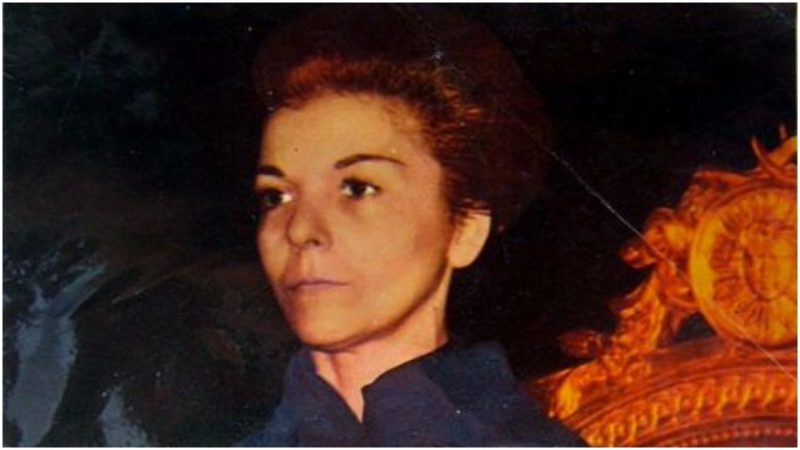Although she wasn’t the first female in the world to lead a country, Isabel Martinez de Perón was the first woman in the world to become a President. She was the third wife of Juan Perón, the thrice elected President of Argentina, and his Vice-President. She took office at the age of 35, in 1974, after the death of her husband. Her presidency was anything but easy. Political sharks thirsty for power attacked Isabel, causing a time of violence, riots, and poverty.
House of Cards might be closer to reality than some people assume. Perón proved that empowering his “better half” was an excellent recipe for maintaining political power. First, he gained a lot of support among the people by supporting the political career of his second wife, Eva Peron, who was the nation’s sweetheart. She was an advocate for human rights in Argentina, as well as women rights, and influenced the whole female population in the country. So together, Juan and Eva Peron were immensely popular and powerful in Argentina. They stood first as a married couple, then as President and First Lady, and later as President and Vice President. Unfortunately, after Evita died in 1952, things changed. With Eva gone, political opinion among the Argentinians started to divide and opposition to Peron grew bolder.
Following a coup in 1955, Perón was forbidden to return to Argentina. While he was in exile, Juan Perón met a beautiful and intelligent nightclub dancer, Isabel Martinez, 35 years his junior. She was born María Estela Martínez Cartas to an Argentinian lower-middle-class family in 1931. Her father passed away when María was still a child, and his death caused financial crisis to the family. Due to poverty, after fifth grade, María dropped out of school, but still managed to receive classes in French, dance, and piano.

In her early twenties, she started working as a dancer in folk music groups and the nightclubs in Buenos Aires, adopting Isabel as her professional name. Later she began performing in the country’s leading theaters. In 1956, Isabel was touring with her dance troupe around Latin America. While in Panama, she met Juan Perón who was fascinated by her charms. Isabel became Perón’s personal secretary and moved with him in Madrid during the time he was forbidden to return to Argentina. Although in exile, by 1960, Peron retained control of the Perónist movement in Argentina and from there, an active role in Argentine politics.
Perón’s Justicialist Party nominated Dr. Héctor Cámpora to run for president in the 1973 elections, although it was widely known who held power behind. As Perón couldn’t enter Argentina, Isabel served as his agent and made frequent trips between Madrid and Buenos Aires. She was helping her husband to regain power while at the same time honing her own political career.
Cámpora won but resigned after just a few months to allow Perón to run for the presidency. He chose his wife to be his Vice President and won the elections with 62 percent of the vote. At this time, the Perónist movement was divided between the right and left wing factions, and the president couldn’t satisfy both. Both the president and the vice president acted more in favor of the right-wing, represented by the Minister of Social Welfare, Jose López Rega.
In the meantime, Perón’s health worsened. He died in June 1974. On 1 July, Isabel Perón officially assumed the presidency, becoming the first woman President in the world. She was known as La Presidente. At first, as a young, politically empowered widow, Isabel had the nation’s sympathies and started working on the enactment of a new, pro-labor employment contract law. But she started losing the public’s support when politically motivated murders occurred. Isabel was held responsible because she had signed a decree allowing the country’s armed forces to take action against “subversives.” Her image deteriorated also because of Rega’s influence over her.
The violence and poverty in Argentina were escalating, the list of political murders grew rapidly, and Argentina was on the verge of total anarchy. In November 1974, following the murder of Alberto Villar, the Chief of Buenos Aires Police, and his wife, the President had to declare a state of siege.

At the beginning of 1975, a military campaign named Operation Independence was initiated to set order in the country, but it became famous for its abuse of power and brutality, which caused more chaos.
The President was asked to resign, but she refused. However, in March 1976, following a bloodless coup, Isabel was deposed and spent five years under house arrest. In 1981, Isabel was convicted of corrupt practices but was later paroled and went into exile to Spain. In 1983 she was pardoned but remained living a low-profile life in Spain, where she lives today.
Isabel’s presidency was difficult. She was inexperienced and relied on the wrong sharks who cared only for their share of the deals. However, she paved the way, setting an example for women to sit in the President’s chair.
